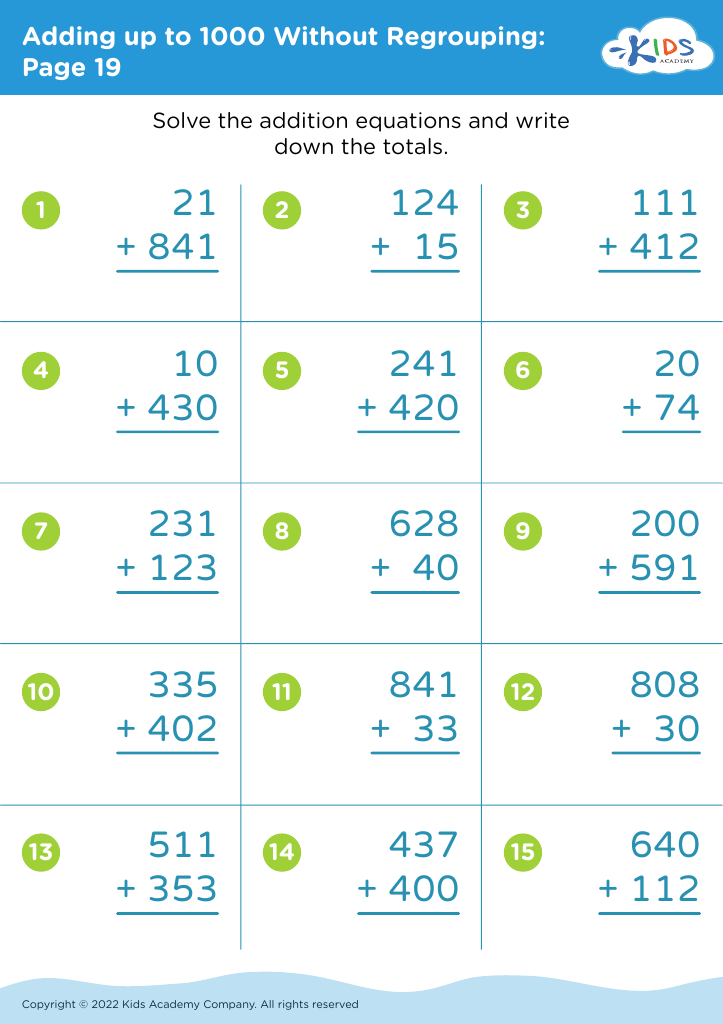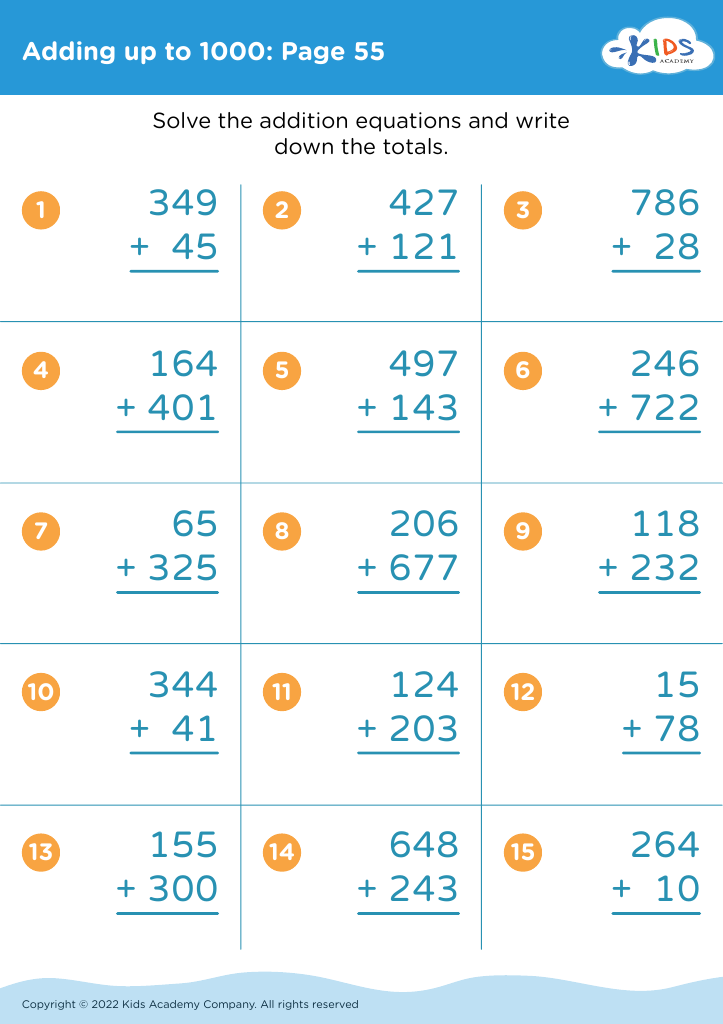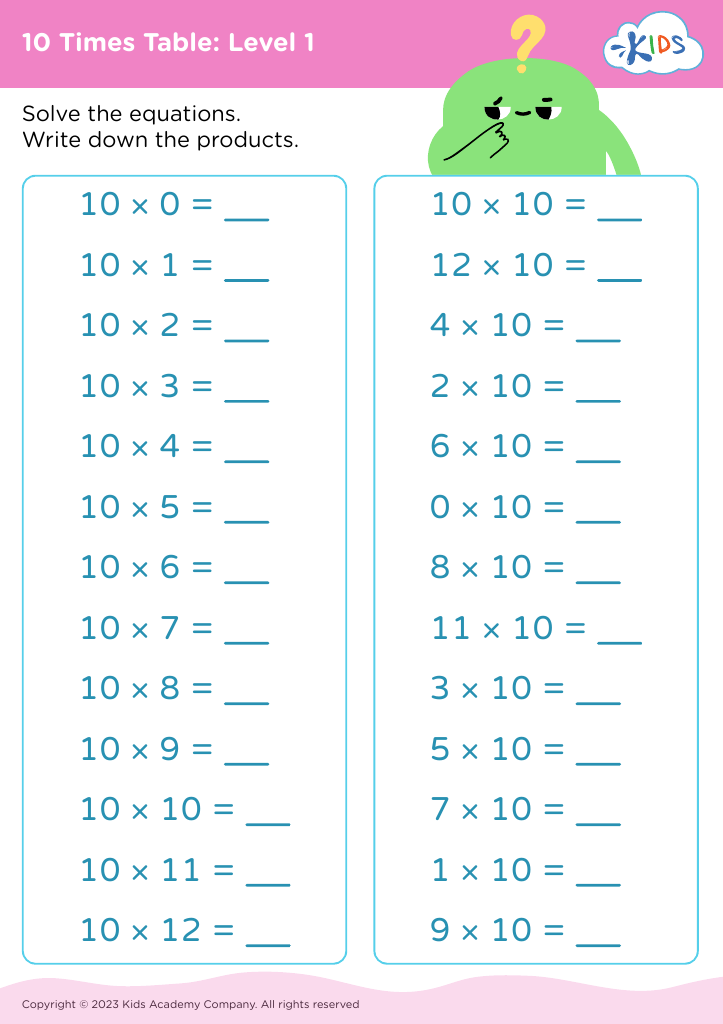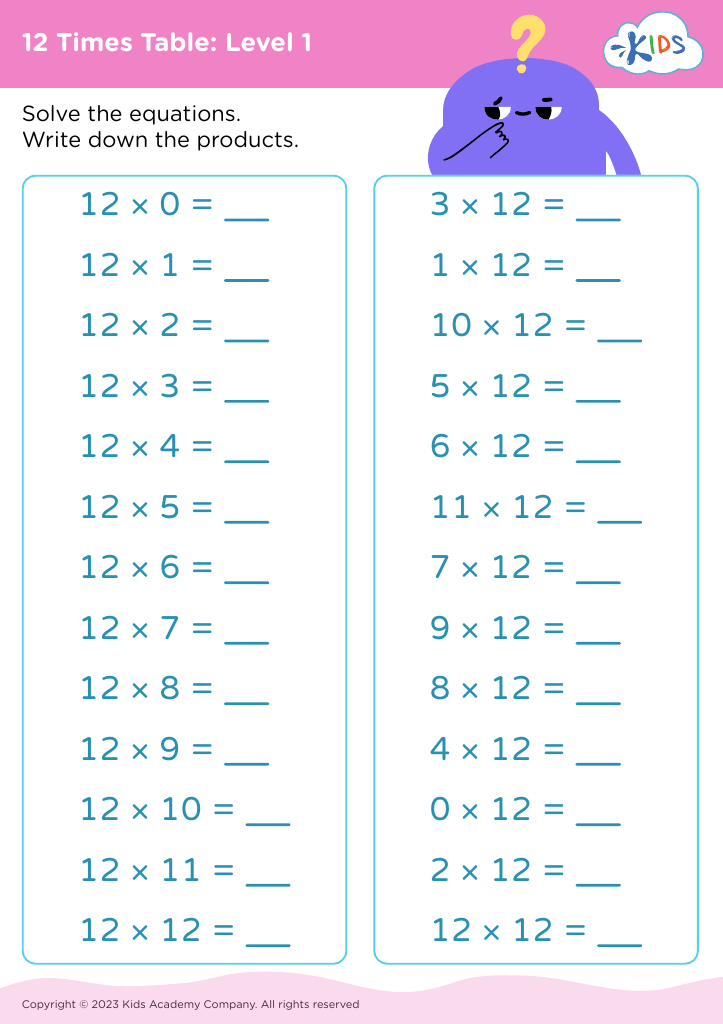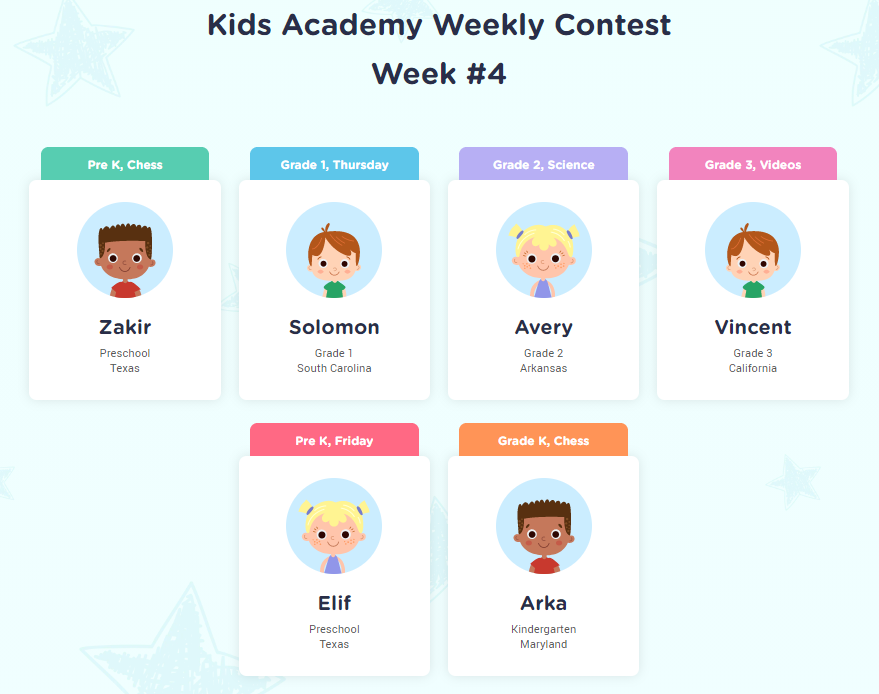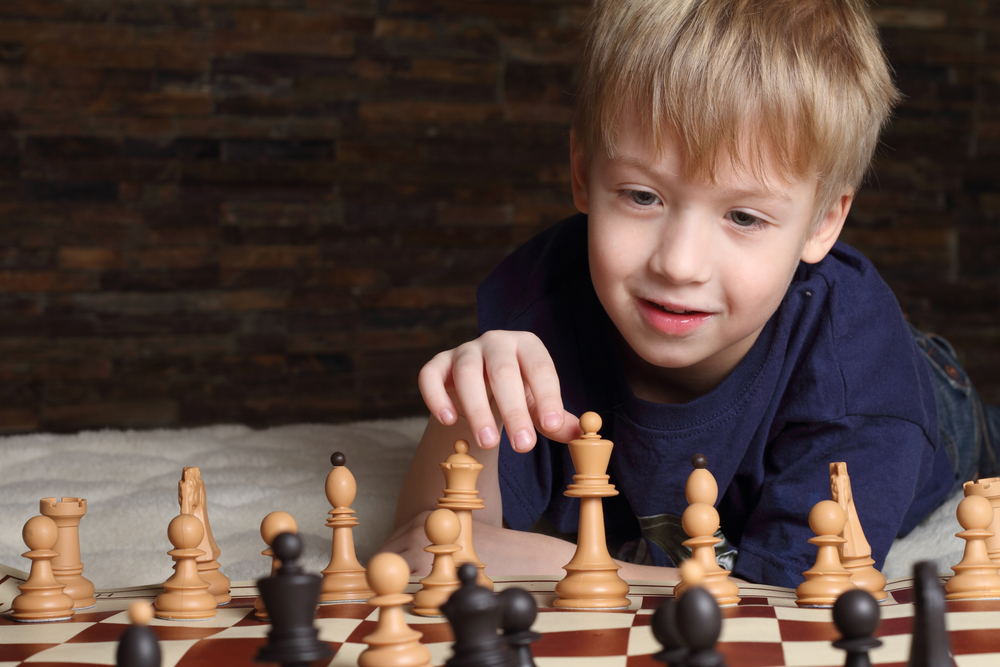Understanding patterns Math Worksheets for 9-Year-Olds
18 filtered results
-
From - To
Unlock your child’s mathematical potential with our "Understanding Patterns" math worksheets designed specifically for 9-year-olds! These engaging resources help young learners recognize, create, and extend patterns through fun activities and challenges. By practicing with colorful visuals and interactive exercises, kids develop critical thinking and problem-solving skills that lay the foundation for advanced math concepts. Ideal for both classroom and home use, our worksheets cater to various learning styles, making math enjoyable and accessible. Boost your child’s confidence and comprehension in math while making learning a delightful experience. Dive into the world of patterns and watch your child thrive!
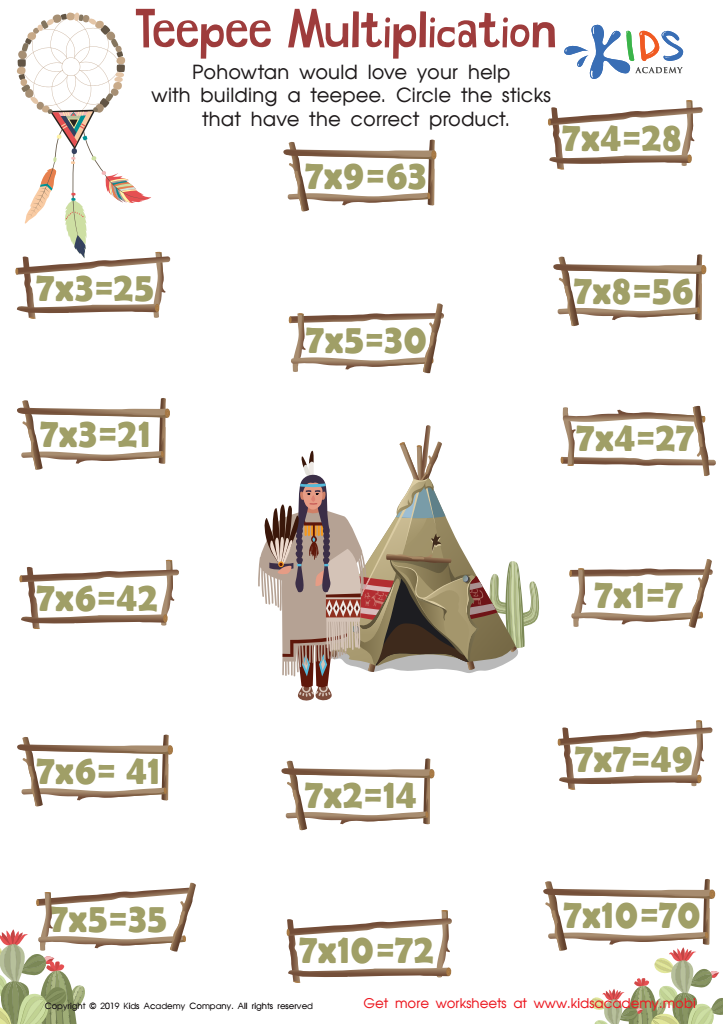

Teepee Multiplication Worksheet
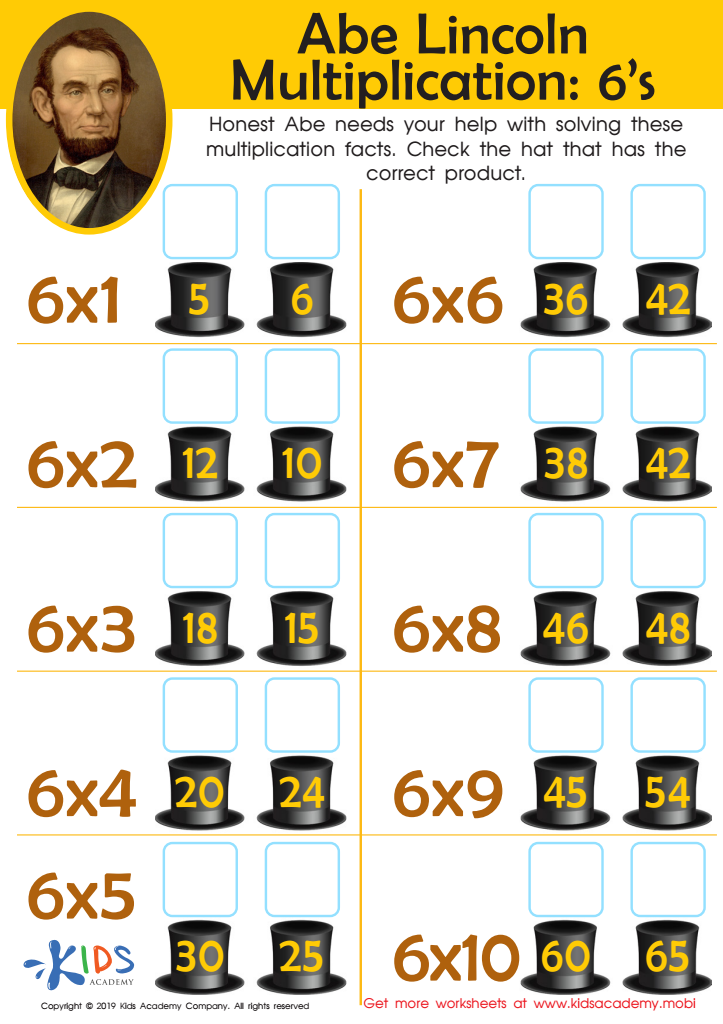

Abe Lincoln Multiplication: 6’s Worksheet
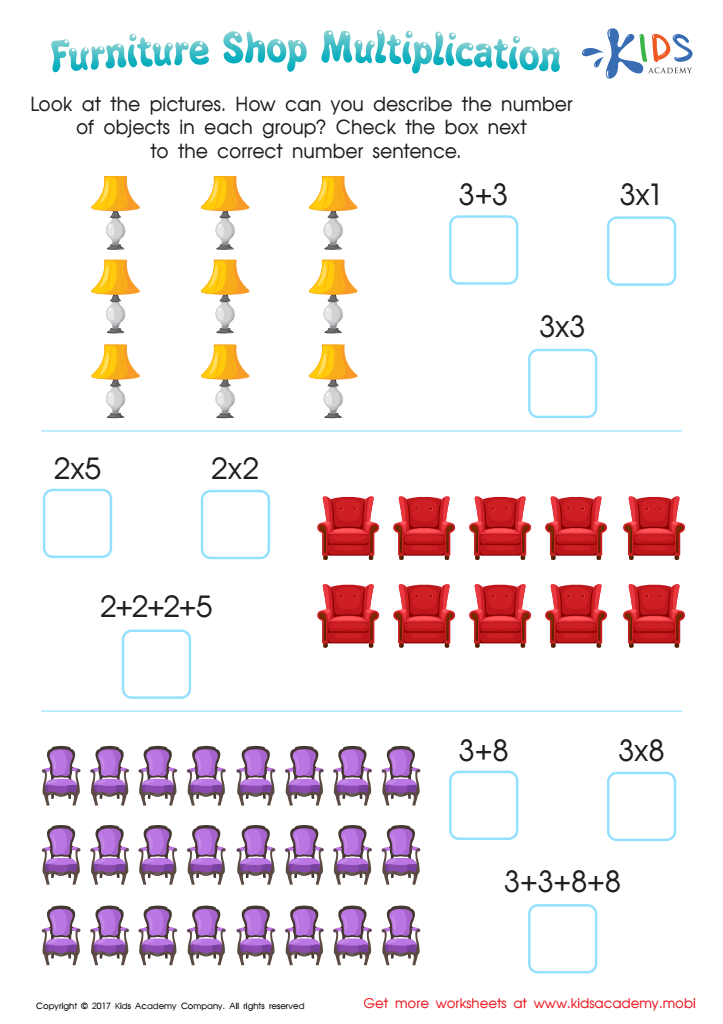

Furniture Shop Worksheet
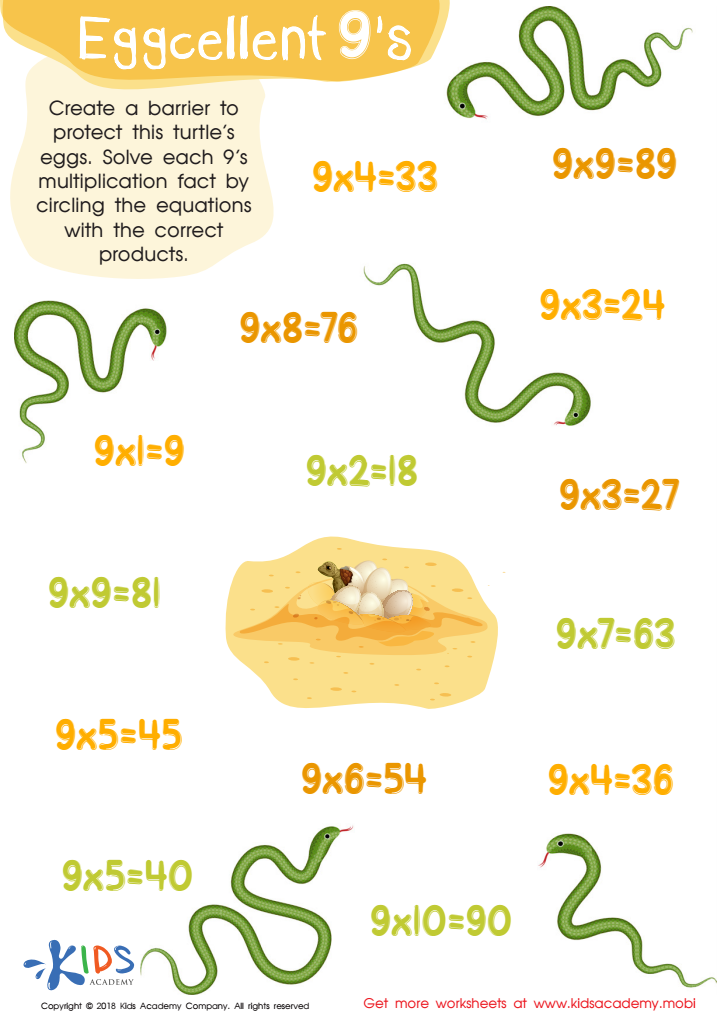

Eggcellent 9’s Worksheet
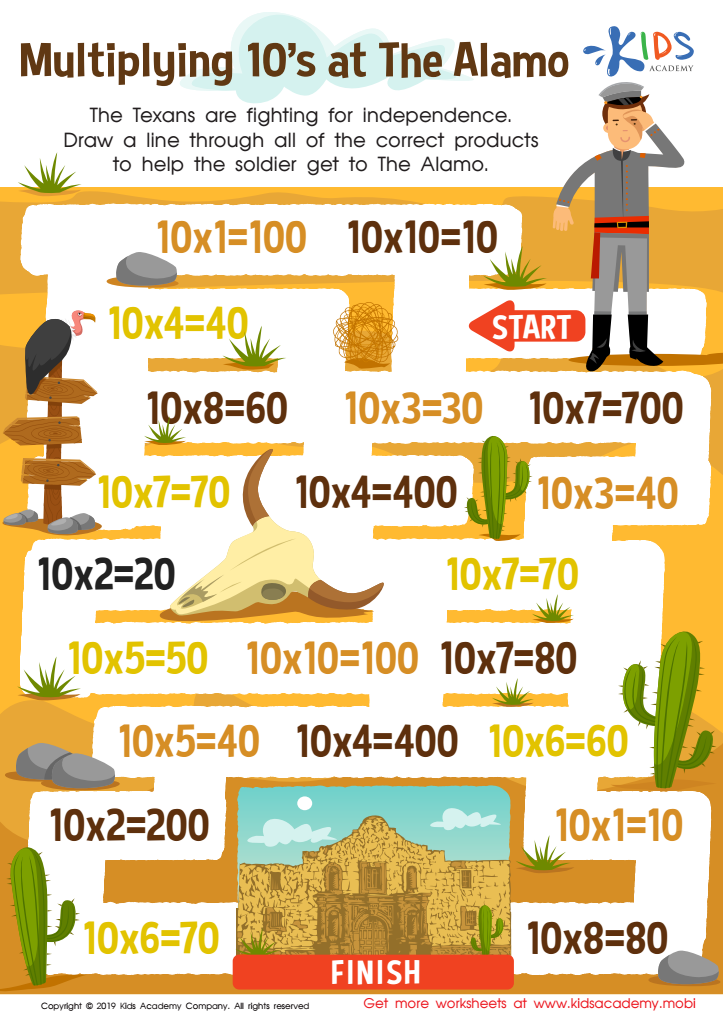

Multiplying 10’s at The Alamo Worksheet
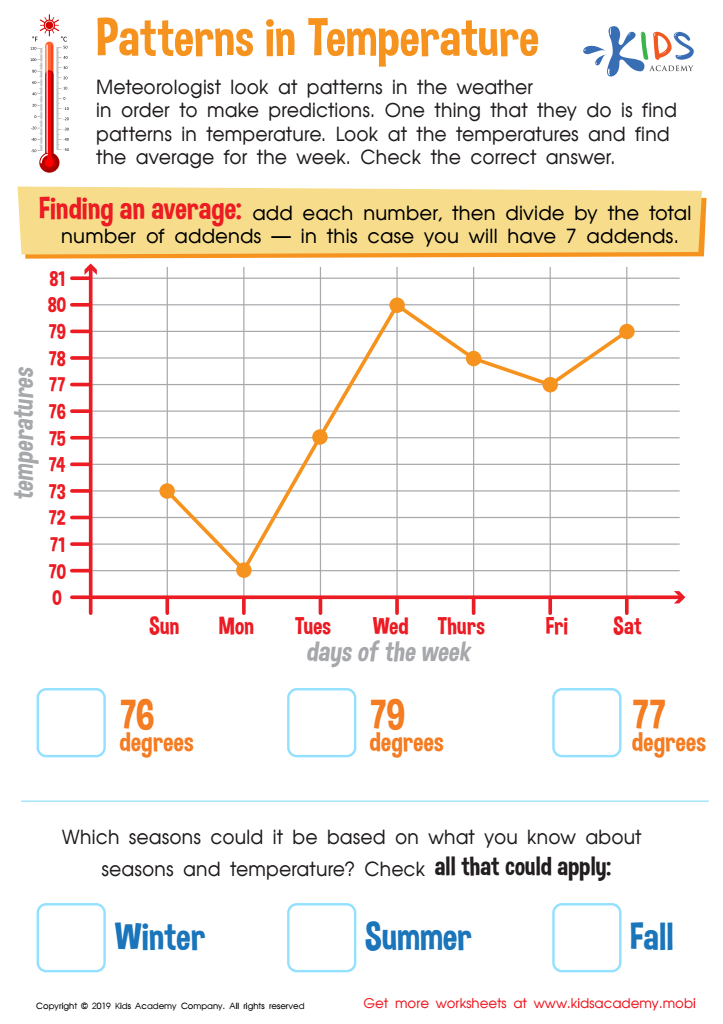

Patterns in Temperature Worksheet
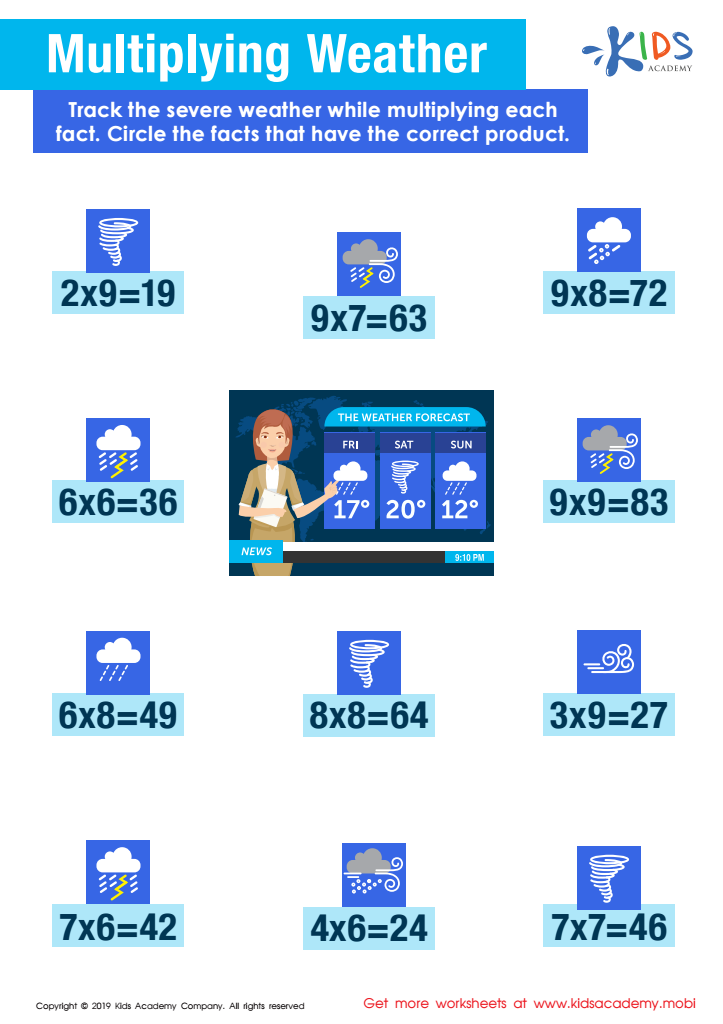

Multiplying Weather Worksheet
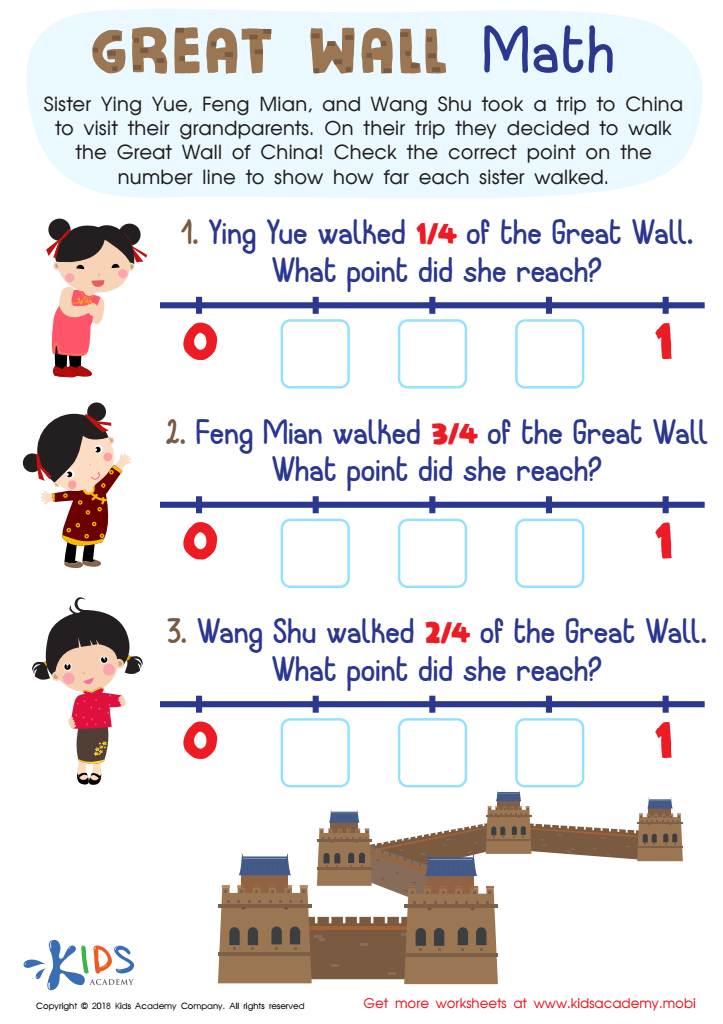

Great Wall Math Worksheet
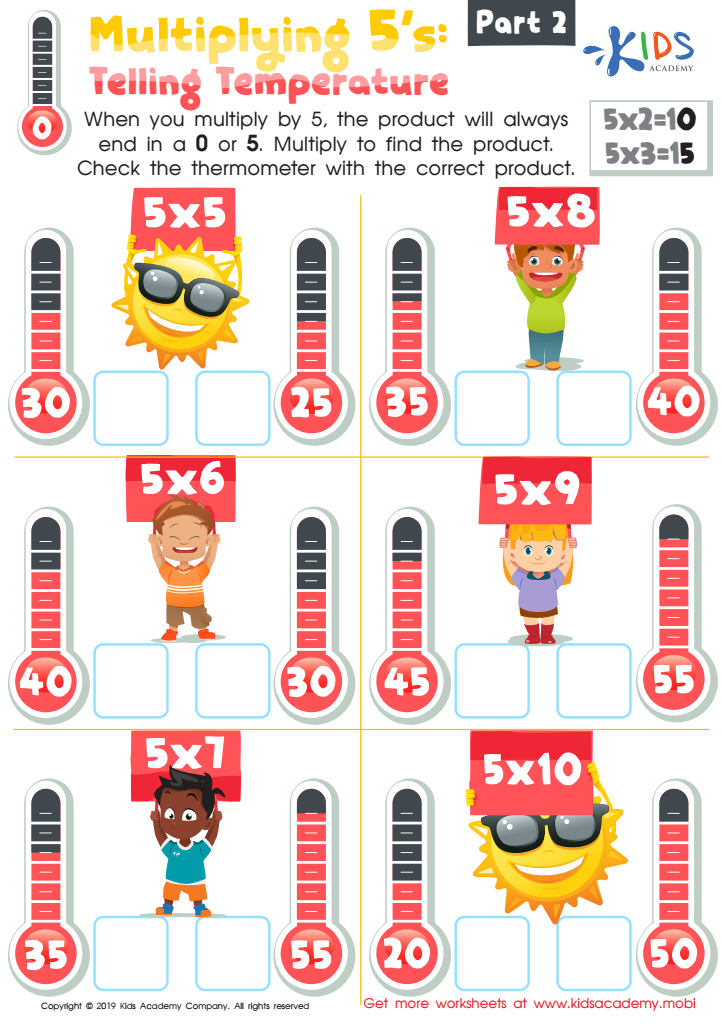

Multiplying 5’s: Telling Temperature Part 2 Worksheet


Multiplying 9’s Montgomery Bus Boycott Worksheet
Understanding patterns in mathematics is crucial for 9-year-olds, and parents and teachers play a vital role in fostering this skill. First, recognizing patterns enhances critical thinking and problem-solving abilities. When children identify relationships between numbers or shapes, they develop logical reasoning, an essential component of mathematical understanding. This foundation lays the groundwork for more complex mathematical concepts as they progress in their education.
Moreover, pattern recognition is integral to daily life and various fields, from science to economics. By enabling children to see patterns, parents and teachers equip them with tools to approach real-world problems more effectively. Engaging in pattern-based activities also promotes creativity and encourages children to explore alternatives in their thinking, enhancing their overall cognitive flexibility.
Additionally, fostering an appreciation for patterns can increase student motivation and engagement in math. When children see the beauty and relevance of patterns in their surroundings, they are more likely to develop a positive attitude toward mathematics. By instilling a strong understanding of patterns at this age, parents and teachers help nurture confident, competent learners who are prepared to tackle more challenging concepts in the future. Ultimately, this skill serves as both a foundation and a bridge to advanced mathematical thinking.
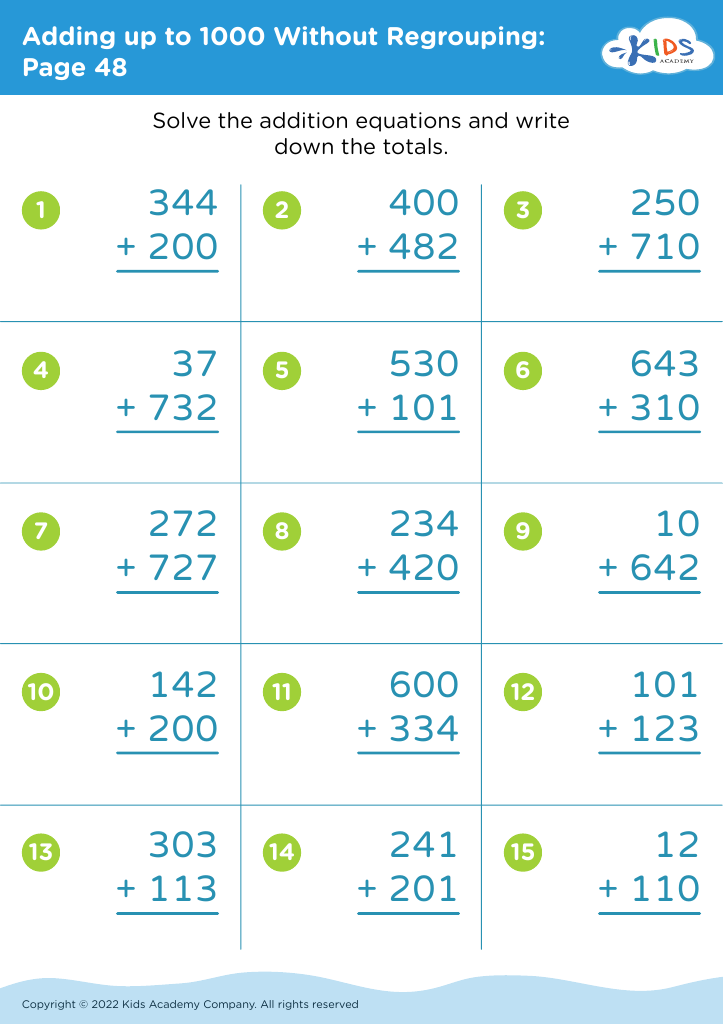


 Assign to My Students
Assign to My Students

